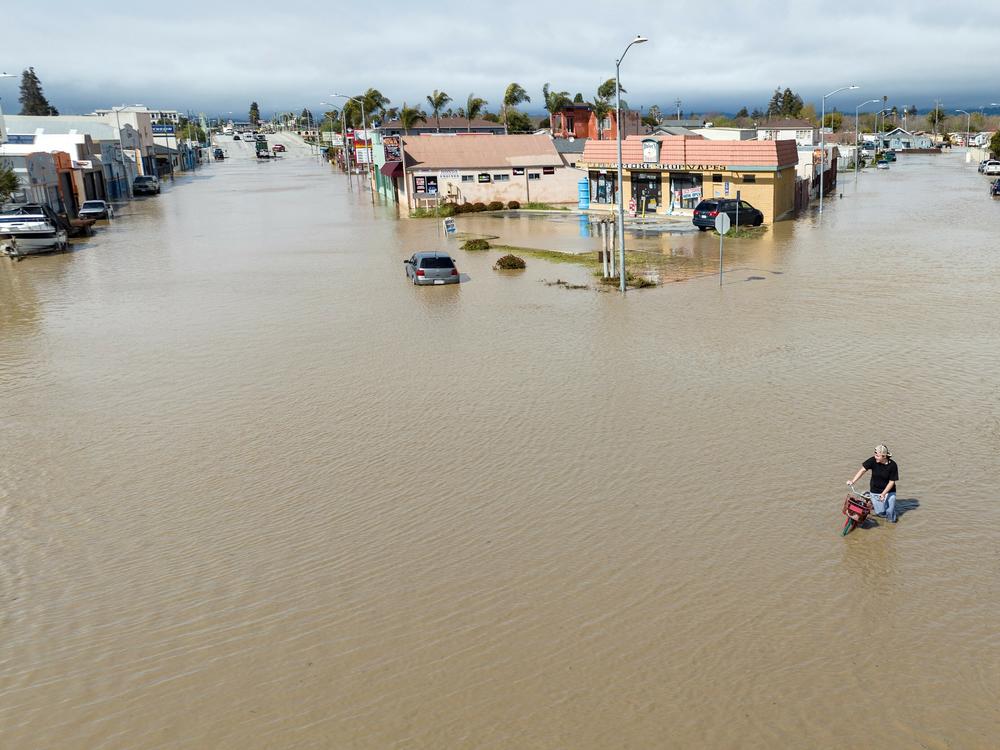3-11-23 Weather outlook from @NWS. Now is the time to clear drains and gutters. Check roads with https://t.co/uvpiHqzk3n and be ready to evacuate when notified. @Cal_OES wants you and your family to be safe! pic.twitter.com/rx7ScvxXQ4
— California Governor's Office of Emergency Services (@Cal_OES) March 11, 2023
Section Branding
Header Content
A waterlogged California is bracing for yet another atmospheric river
Primary Content
Updated March 13, 2023 at 1:43 AM ET
California is bracing for another atmospheric river expected to make landfall as soon as Monday night as the state has been inundated with intense rainfall since Friday, causing widespread flooding and mudslides.
That is forecast to bring more rain and snow — and more flooding — through Wednesday.
California Gov. Gavin Newsom has proclaimed a state of emergency in 21 counties, and President Biden has also approved his request for federal assistance.
Officials said at least two people died in recent severe weather in the state. A spokesperson for the California Governor's Office of Emergency Services said Sunday that the agency hasn't received any notification of fatalities from local officials for the current round of storms so far.
The rain from the atmospheric river that made landfall Thursday flooded roads and rivers, and thousands of residents were under evacuation orders. A river levee in central California breached just before midnight Friday, forcing hundreds of evacuations and dozens of rescues as the small Monterey County town of Pajaro found itself completely underwater.
"There are about 1,700 people displaced from their homes in Pajaro, and the town is inundated with water throughout," Monterey County Communications Director Nick Pasculli told NPR.
Atmospheric rivers form when a long channel of wind transports water vapor from the tropics, and they produce heavy rain or snow when they make landfall.
As of late Sunday evening, about 18,000 California customers were without power, according to the outage tracking site PowerOutage.us — down from 37,000 Saturday afternoon.
The outages are concentrated in hard-hit Monterey County, which saw about 13 inches of rain and the devastating Pajaro levee breach. The Bay Area in northern California was hit with about 10 inches of rain.
Starting late Monday through early Wednesday, the next atmospheric river "is likely to produce additional very heavy rainfall," especially in northern and central California, and "very heavy mountain snowfall and periods of strong winds," said David Lawrence, a National Weather Service meteorologist.
That could worsen the already severe flooding. In addition to flash flooding, the extra rain and snowmelt could cause streams and rivers to overflow in lower elevations throughout central and northern California.
The California Governor's Office of Emergency Services urged residents to clear their drains and gutters, check roads online before traveling and be ready to evacuate if notified to do so.
In anticipation of the storms headed for the state this week, the California Governor's Office of Emergency Services has prepositioned flood-fighting personnel.
As emergency responders prepare for more flooding at lower elevations, more snow heads for high elevations. Some residents in the San Bernardino mountains are still stranded under snow from a blizzard two weeks ago.
Copyright 2023 NPR. To see more, visit https://www.npr.org.
Bottom Content

